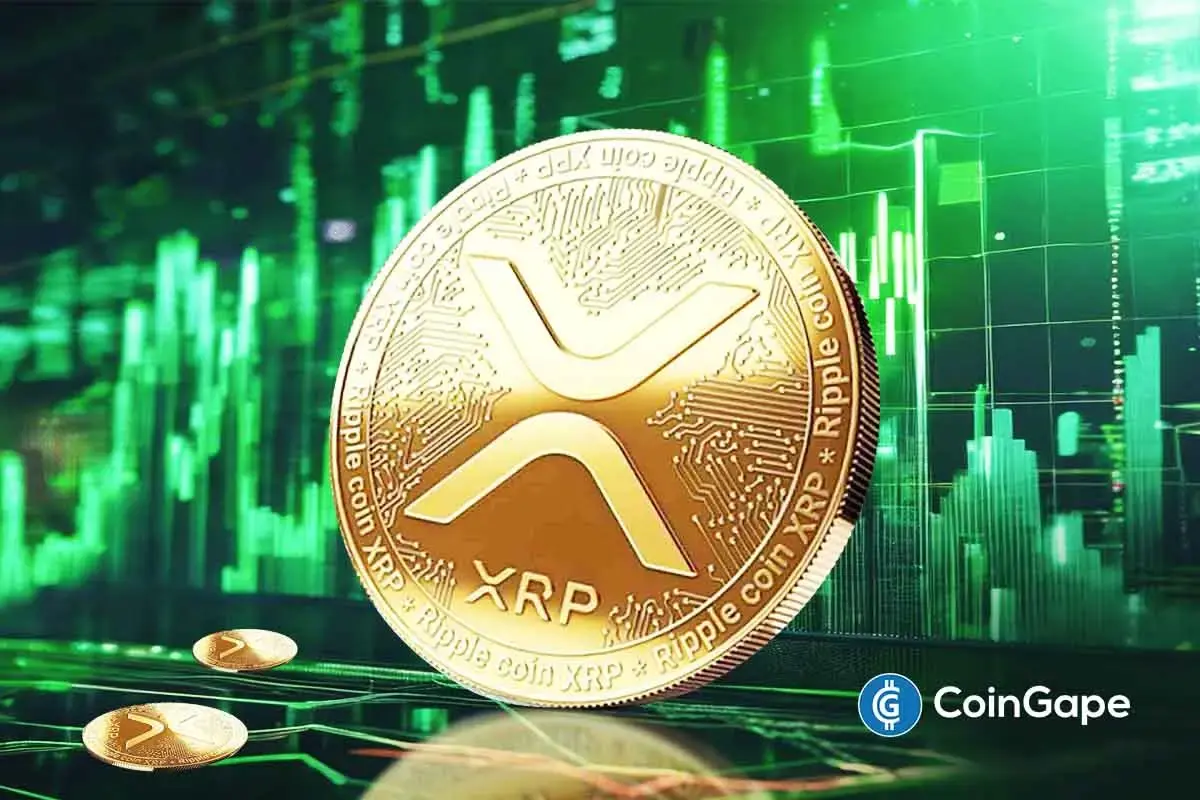Ripple Pain Hits Peak: Did You Buy XRP for Real Utility or Green Candles?

Anyone holding XRP for the long term is feeling the squeeze these days. The price keeps sliding downward, making many investors question their initial commitment to any XRP long-term investment.
Also Read: New Country Begins Ditching US Dollar, Accumulates Gold in Central Bank
XRP’s Long-Term Investment Pain: History, Utility, and Outlook

The Reality Check
Today’s XRP community faces what knowledgeable observers characterize as a defining market moment. All Things XRP posted on social media:
IF YOU BOUGHT XRP WHEN TRUMP GOT ELECTED, THIS CRASH IS YOUR GUT CHECK.
— All Things XRP (@XRP_investing) April 7, 2025
IF YOU BOUGHT XRP WHEN TRUMP GOT ELECTED, THIS CRASH IS YOUR GUT CHECK.
You either bought because you knew the fundamentals — real utility, cross-border payments, regulatory positioning — and you hold with conviction.
Or you bought on FOMO — chasing green candles, and…
This pointed observation effectively highlights how significant market corrections naturally separate conviction-driven investors from trend followers. Holders who purchased XRP based on its potential to transform cross-border payments maintain their positions despite unrealized losses. In contrast, those who acquired tokens based on FOMO now experience what the community aptly describes as “MAX PAIN” while watching their investments diminish in value.
Price History’s Harsh Lessons
Looking back at its history reveals quite a roller coaster since 2016. The digital asset has evolved from a relatively obscure token to a recognized name in the cryptocurrency ecosystem, with patient investors weathering several dramatic market cycles along the way.
These price fluctuations stem from a combination of technological developments, shifting regulatory landscapes, and broader market sentiment. Experienced XRP long-term investment advocates view these movements as expected volatility patterns rather than signals to liquidate positions.
Also Read: Analyst Explains When the US Stock Market Will Rebound
The Utility Foundation
The core XRP utility has revolutionized approaches to international transfer inefficiencies—a persistent challenge in traditional financial frameworks. This technological architecture enables cross-border transactions within seconds rather than days, at a fraction of conventional costs. Such practical applications differentiate XRP from speculative cryptocurrencies lacking substantial use cases.
All Things XRP emphasized this fundamental distinction:
You either bought because you knew the fundamentals — real utility, cross-border payments, regulatory positioning — and you hold with conviction.
This utility-focused approach to XRP long-term investment provides substantive rationale for maintaining positions despite temporary price volatility currently affecting the market.
Regulatory Progress and Future Outlook
Any realistic XRP price prediction must account for the asset’s distinctive regulatory standing. The partial clarity achieved in July 2023—when court rulings established that secondary market XRP sales weren’t securities transactions—created strategic advantages within an uncertain regulatory environment still affecting most digital assets.
This regulatory differentiation remains fundamentally important for XRP’s institutional adoption potential, underpinning its value proposition as an XRP long-term investment option for forward-thinking market participants.
Also Read: Pepe Vs. Pi Coin: Which Will Hit An All-Time High First?
Ripple: Between Conviction and Hype
Current market dynamics are drawing clear lines between different investor mindsets. All Things XRP was clear about the fact that:
This is where conviction gets separated from hype.
For investors who recognized XRP’s potential to transform global payment infrastructure, current market conditions represent just one chapter in an ongoing narrative. Their belief in XRP’s real utility remains anchored in practical applications rather than immediate returns. That’s the very essence of strategic cryptocurrency investing.
Ripple Pain Hits Peak: Did You Buy XRP for Real Utility or Green Candles?

Anyone holding XRP for the long term is feeling the squeeze these days. The price keeps sliding downward, making many investors question their initial commitment to any XRP long-term investment.
Also Read: New Country Begins Ditching US Dollar, Accumulates Gold in Central Bank
XRP’s Long-Term Investment Pain: History, Utility, and Outlook

The Reality Check
Today’s XRP community faces what knowledgeable observers characterize as a defining market moment. All Things XRP posted on social media:
IF YOU BOUGHT XRP WHEN TRUMP GOT ELECTED, THIS CRASH IS YOUR GUT CHECK.
— All Things XRP (@XRP_investing) April 7, 2025
IF YOU BOUGHT XRP WHEN TRUMP GOT ELECTED, THIS CRASH IS YOUR GUT CHECK.
You either bought because you knew the fundamentals — real utility, cross-border payments, regulatory positioning — and you hold with conviction.
Or you bought on FOMO — chasing green candles, and…
This pointed observation effectively highlights how significant market corrections naturally separate conviction-driven investors from trend followers. Holders who purchased XRP based on its potential to transform cross-border payments maintain their positions despite unrealized losses. In contrast, those who acquired tokens based on FOMO now experience what the community aptly describes as “MAX PAIN” while watching their investments diminish in value.
Price History’s Harsh Lessons
Looking back at its history reveals quite a roller coaster since 2016. The digital asset has evolved from a relatively obscure token to a recognized name in the cryptocurrency ecosystem, with patient investors weathering several dramatic market cycles along the way.
These price fluctuations stem from a combination of technological developments, shifting regulatory landscapes, and broader market sentiment. Experienced XRP long-term investment advocates view these movements as expected volatility patterns rather than signals to liquidate positions.
Also Read: Analyst Explains When the US Stock Market Will Rebound
The Utility Foundation
The core XRP utility has revolutionized approaches to international transfer inefficiencies—a persistent challenge in traditional financial frameworks. This technological architecture enables cross-border transactions within seconds rather than days, at a fraction of conventional costs. Such practical applications differentiate XRP from speculative cryptocurrencies lacking substantial use cases.
All Things XRP emphasized this fundamental distinction:
You either bought because you knew the fundamentals — real utility, cross-border payments, regulatory positioning — and you hold with conviction.
This utility-focused approach to XRP long-term investment provides substantive rationale for maintaining positions despite temporary price volatility currently affecting the market.
Regulatory Progress and Future Outlook
Any realistic XRP price prediction must account for the asset’s distinctive regulatory standing. The partial clarity achieved in July 2023—when court rulings established that secondary market XRP sales weren’t securities transactions—created strategic advantages within an uncertain regulatory environment still affecting most digital assets.
This regulatory differentiation remains fundamentally important for XRP’s institutional adoption potential, underpinning its value proposition as an XRP long-term investment option for forward-thinking market participants.
Also Read: Pepe Vs. Pi Coin: Which Will Hit An All-Time High First?
Ripple: Between Conviction and Hype
Current market dynamics are drawing clear lines between different investor mindsets. All Things XRP was clear about the fact that:
This is where conviction gets separated from hype.
For investors who recognized XRP’s potential to transform global payment infrastructure, current market conditions represent just one chapter in an ongoing narrative. Their belief in XRP’s real utility remains anchored in practical applications rather than immediate returns. That’s the very essence of strategic cryptocurrency investing.


